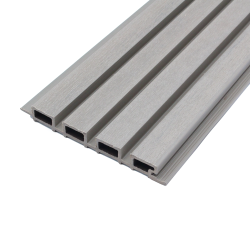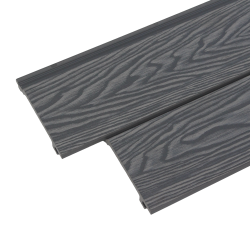-1060x400w.jpeg)
Dormer conversions are a fantastic way to add space and value to your home, but the exterior design plays a pivotal role in achieving a cohesive and aesthetically pleasing look. In this blog post, we'll explore the benefits of using outdoor composite cladding for dormer conversions, comparing it to traditional options like rendering and timber cladding. From woodgrain to slatted and sanded cladding, we'll dive into the visual effects these options offer, along with considerations for roofs and the underside of dormer structures.
Why Choose Composite Cladding for Dormer Conversions:
Composite decking stands out as a superior choice for dormer conversions due to its durability, low maintenance, and versatile design options. Unlike rendering, it won't crack or peel, and unlike timber cladding, it won't warp or rot. The longevity and aesthetic appeal make composite decking a wise investment for enhancing your dormer conversion.
Options Galore: Woodgrain, Slatted, and Sanded Cladding:
Woodgrain Cladding: For a classic and timeless appearance, woodgrain composite cladding mimics the natural beauty of wood without the associated upkeep. It's an excellent choice for traditional or rustic-style houses.
Slatted Cladding: If you're aiming for a modern and contemporary look, slatted cladding provides clean lines and a sleek aesthetic. Ideal for minimalist or urban-inspired designs, slatted cladding adds a touch of sophistication to your dormer conversion.
Sanded Cladding: Achieve a smooth and refined finish with sanded composite cladding. This option works well for homes with a coastal or beach-house vibe, providing a clean and elegant appearance.
Cladding for All Areas: Roofs and Undersides:
Extend the beauty of composite decking to all areas of your dormer conversion, including roofs and undersides. Create a cohesive look by incorporating the same cladding material throughout. This not only enhances the visual appeal but also ensures consistency in design, adding a touch of sophistication to every angle of your dormer.
Weatherproof Properties of Composite Cladding:
Composite cladding is engineered to withstand the elements, making it an ideal choice for the unpredictable weather conditions your dormer may face. Its resistance to rot, mould, and fading ensures that your dormer conversion will maintain its beauty and structural integrity over the years, even in challenging climates.
Market Value and Curb Appeal:
Investing in outdoor composite decking for your dormer conversion doesn't just enhance its visual appeal—it also adds market value to your property. Potential buyers are drawn to the durability and low maintenance of composite materials, making your home more appealing in the real estate market. The curb appeal created by a well-designed dormer can make a lasting impression and set your property apart.
When it comes to dormer conversions, outdoor composite decking emerges as a winning choice for homeowners seeking durability, versatility, and unmatched visual appeal. Whether you opt for woodgrain, slatted, or sanded cladding, the options are vast, catering to different aesthetics and design preferences. Consider the weatherproof properties, the consistent application on roofs and undersides, and the lasting market value that composite decking brings to your dormer conversion. Elevate your home, redefine its exterior, and enjoy the enduring beauty of a dormer conversion enhanced by composite materials.



